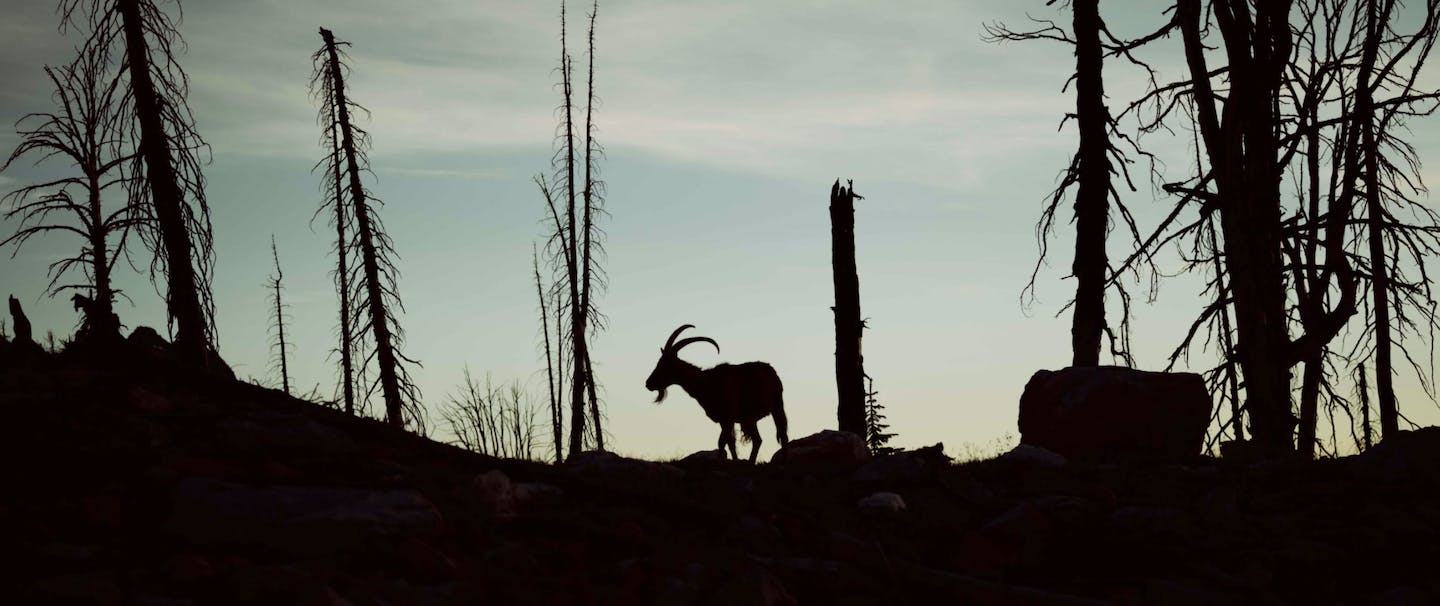They are a fascinating sight from afar, a lone man leading a long line of goats down a trail. The sloping, soaring horns above their sharply angular faces bounce back and forth as their lithe bodies deftly work their way over the slightly uneven footing. Brightly colored pannier packs filled with gear protrude from both sides of their bodies, creating a moving splash of color that stands out amongst the green evergreens crowding the track. As they draw close, you only hear the slight tingle of the bells around their neck and the voice of the man giving them gentle commands.
One can’t help but stop and stare. It is a scene so uncommon in the backcountry, but one that the man leading them, Marc Warnke, hopes will become more common.


Using goats as pack animals, while uncommon in America, is not without precedent. As one of the earliest domesticated animals in the world, goats have been by humans’ sides for thousands of years. Intelligent, friendly, and highly agile, they are the ideal animal to take into the wilderness, according to Warnke, if you’re ready for the attention.
“If you want to be a rockstar, just walk around with a goat. Everyone wants to take pictures and meet them,” he says. “They’re like a Golden Retriever with horns that embody joy, but sometimes they can almost be too loving and be underfoot. They want to be near you so much.“
Ten years ago, Warnke, a lifelong hunter, started using goats as an easy way to get his young family into the wilderness that surrounded his home just outside Boise, Idaho. They were more affordable than the horses and llamas that others were using. He quickly realized that while they were perfect, his kids loved them and they made excellent pets; there was a dearth of gear for goats. The only packs and saddles he could find didn’t fit hit goats correctly or were designed for mules, so, he set out to remedy that.
“There is no better animal to head out with into the backcountry. They are as smart as a dog, nicer than a llama, and safer than a horse, plus they are damn good companions.”

He created a saddle that quickly adapted to different goat bodies, pack panniers that fit, and other gear. The few other farmers and packers working with goats offered him advice and soon he designed a training regimen to bring his goats, ones he bottle-fed from birth, into trail-ready shape. Realizing that they were a highly misunderstood animal in America, he launched packgoats.com to share all the lessons he had learned and to spread the word about goats.
“There is no better animal to head out with into the backcountry,” he says. “They are as smart as a dog, nicer than a llama, and safer than a horse, plus they are damn good companions.”
These days he regularly takes clients, either hunters or hikers, into the forests and mountains that fill Idaho, where they spend nights under the stars. It can feel otherworldly as they hike behind him and his string of six to eight goats, each trotting behind the other in a predesignated goat pecking order. No rope is required.


Wearing only a day pack, his clients get to know the cloven-hooved Swiss Alpine goats that happily follow their leader, Warnke. Merciless has huge horns, Thorn the bright eyes, and Noah is a character with floppy ears. Each of his thirty goats has its personality and will live roughly twelve years. Their prime packing period is between years three to nine, when they can carry close to sixty pounds of gear, including their packs.
Each goat is a member of his family, and Warnke’s passion for them is infectious. Their calm demeanor and playful energy ensure that each trip into the wilderness is unforgettable, as it should be.





